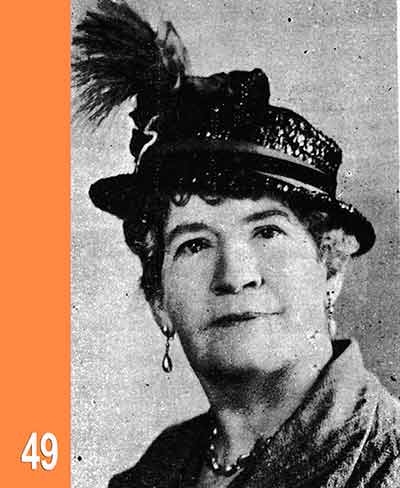Sarah Rebecca (Pattie) Boyd
Induction Year:¬Ý2009
Lived:¬Ý1867-1947
Papers:
Knoxville Tribune; Knoxville Journal
Miss Pattie Boyd was the first Tennessee journalist to bring family and social news to the mainstream newspaper page. For 51 years, from 1886 to 1937, she provided daily news reports of Knoxville’Äôs people and their family lives to the Knoxville Tribune and later the Knoxville Journal. She reset the content tone for news about women and families as the first editor of a Tennessee newspaper society page.
Born June 5, 1867, she adopted her childhood nickname ’ÄúPattie’Äù, by which she was thenceforth known. Seeking to pay her horse’Äôs board at age 18, she challenged The Knoxville Tribune publisher to accept her news copy written about people, families and interesting social events, persuasively arguing such stories would boost circulation. She contended such news would enliven a newspaper dulled with news pages of politics and rewrites of national and foreign news.
She was told the newspaper did not hire women, but she could write at home and send in her longhand reports by messenger. She agreed and thus began her newspaper reporting career, a full six years before the first woman was admitted in 1892 to University of Tennessee classes.
East Tennessee in the Gay 1890s witnessed the advent of the L&N and Southern railroads, and a resulting social and economic transformation. And Knoxville was a country village, but became a city still lacking the noise of motors, glare of electric lights, or speed and bustle of later years.
In this era, newspaper descriptions of Knoxville wedding ceremonies were bland, blunt, and absent of descriptive fact and flavor. Miss Pattie Boyd’Äôs early writing style introduced to the Knoxville Journal was first sentimentally high-Victorian, full of babbling brooks and singing brides. Her later writing style adhered to descriptive clarities used in newspaper reports of other community events.
Her stories described flowers, dresses and decorations, identified ceremony attendees, listed the exact time of wedding vow exchanges and career occupations of both bride and groom. As her career developed, she learned to typewrite her news copy, and in 1911 began working from her newspaper office with an eye for ceremonial detail and protocol that became legend.
During her career, she covered an estimated 30,000 weddings, and hundreds of parties, dances, dinners and bridge clubs. She also reported the extensive social activities surrounding the Knoxville official visits of U.S. Presidents Harrison, McKinley, Taft, Theodore and Franklin Roosevelt, and official visits of Postmaster General John Wanamaker, Secretary of State Cordell Hull, Interior Secretary Harold Ickes, and Admirals Thomas Dewey and Winfield Scott Schley.
In 1899, Miss Pattie was named a Knoxville-area sponsor of the Sixth U.S. Immune Regiment during the Spanish-American War, and she helped ensure that soldiers quartered there were fed and comfortable. She promoted the 1911 Appalachian Exposition leading to establishment of Chilhowee Park and its craft display building, and she worked for women’Äôs suffrage.
In 1908, Miss Pattie provided significant encouragement to developers of the Parent-Teacher Association of Knoxville and area mothers seeking to improve crowded school rooms, eliminate school outdoor toilets, and establish school playgrounds. Her reporting of PTA group activities legitimized school improvement and parental involvement efforts, and encouraged the 1911 organization of the Tennessee Congress of Parents and Teachers.
Her profound influence on Tennessee journalism was recognized April 26, 1936, in a special Golden Jubilee Edition of The Knoxville Journal and reception honoring her 50 years as a newspaper woman. More than 4,000 persons attended, and renowned cartoonist Robert L. Ripley penned a special ’ÄúRipley’Äôs Believe It or Not’Äù panel documenting her career. She retired May 4, 1937, with herwell-earned reputation as the first of a new breed of Tennessee newspaper journalists.
